#EXPO 1958
Explore tagged Tumblr posts
Text
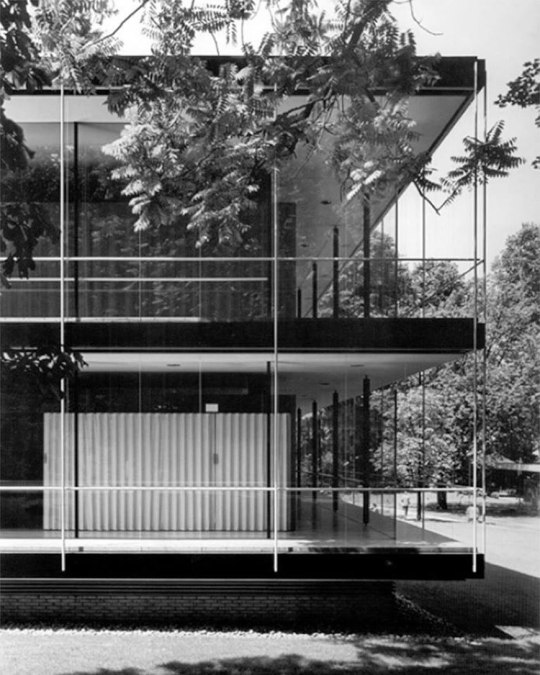
The German Pavilion at Expo 1958 in Brussels, Belgium, by Sep Ruf & Egon Eiermann
#1950s#expo 1958#exhibition pavilion#glass#steel#architecture#belgium#architektur#egon eiermann#sep ruf
315 notes
·
View notes
Text

Princess Grace, wearing one of her iconic Hermes bags, visit Expo'58 in Brussels, Belgium, with Prince Rainier.
5 notes
·
View notes
Text

Human zoos in the West were a feature of colonialism. They fed a fascination for exotic lands and a grotesque pseudo-science that focussed on the physiology of so-called 'savages.
Africans were exhibited in primitive settings for the enjoyment of spectators at trade fairs and travelling shows, helping legitimise the domination of 'lesser' beings by supposedly 'superior' Western civilisations.
One famous 'exhibit' was Saartjie Baartman, who was also known as Sarah Bartmann. She was a South African woman who attracted crowds due to a genetic condition (steatopygia), resulting in a highly protruded posterior. She was shipped to London in 1810 and spent most of her life on display. In 2002, her remains were repatriated and buried in South Africa. Another infamous exhibition was unveiled at the 1958 World Expo in Brussels, Belgium. It featured Congolese people in their mocked-up 'village' at the venue.
Awareness of the foul, dehumanising practice is slowly being raised. A Paris exhibition in 2011 called
"Inventing the Savage" showed how human zoos laid the foundations for racism against Africans. It was the brainchild of the former French footballer, Liliane Thuram, whose Caribbean family suffered under slavery. Though human zoos do not exist anymore, the effects of colonisation and exploitation of coloured people persist to this day. That's why we'll keep posting about them.
#social justice#current events#human rights#black history#african history#history#history posting#history tumblr#history side of tumblr#history lover#important#important to know#us history#usa history#american history#united states history#colonialism#western imperialism#american imperialism#us imperialism#political#political posting#politics#africa
56 notes
·
View notes
Text

Princess Grace and Prince Rainier of Monaco attending at the Expo in Bruxelles on June 21, 1958. (Archives de Jean Paul Bascoul)
11 notes
·
View notes
Photo

Pictorial map of Russia designed for the 1958 Brussels World's Fair, the first large scale world expo held after World War 2. Once the fair was over the Soviet Pavillion was packed up and brought back to the USSR except for the model of Sputnik, which went missing.
by @ideararemaps
80 notes
·
View notes
Text

Audrey Hepburn en la Expo de Bruselas, 1958.
"Hay una ciencia de la guerra, pero lo extraño es que no hay una ciencia de la paz. Hay colegios de guerra; ¿por qué no podemos estudiar la paz?"
- Audrey #Hepburn (1929-1993).
https://estebanlopezgonzalez.com/2016/05/14/por-la-paz-y-la-no-violencia/
6 notes
·
View notes
Text
Sunday Stamps: Southern Hemisphere
….is the theme for today’s Sunday Stamps French Polynesia – 1958 The White Horse by Paul Gaugin New Zealand – 1970 Puriri Moth Indonesia – 1951 Rice and Cotton Mauritius – 1994 Protection of the Environment – Submarine View Mozambique – 1964 Customs Barge Tanzania – 1985 Pottery Rwanda – 1967 Expo ’67 Montreal – Spears, Shields, and Bow Congo – 1979 Communication reduces distance Zaire –…
#angola#argentina#australia#congo#gaugin#horse#indonesia#katanga#malaysia#Mauritius#Mozambique#new zealand#peru`#Polynesia#Rwanda#South Africa#Sunday Stamps#Tanzania#unesco#Zaire#Zimbabwe
2 notes
·
View notes
Text
The Dictator of Time
(De)Contextualizing the Phenomenon of Laterna Magika by Lucie Česálková & Kateřina Svatoňová, Spector Books, Leipzig, 408 pages, 417 b/w – and colour illustrations, March 2023
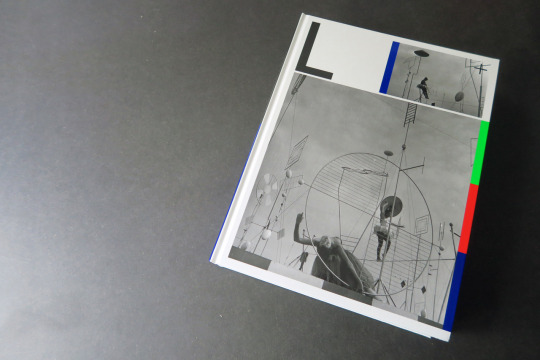
What does a book regarding a multimedia theatre play founded in the late 1950s Czechoslovakia do here? Well, it’s rather simple: architecture is not only the art of constructing buildings that will last (maybe) for centuries, it’s also about bodies in space, coloured lights, sound and narration. One should just remember that Charles and Ray Eames produced no less than 125 films, built a pavilion for IBM at the New York World’s Fair (1964-65) or invented a seven-screen projection system for the American Exhibition in Moscow (Glimpses of the USA,1959) to understand that architects perceived early the fun and creativity that resides in multimedia installations.
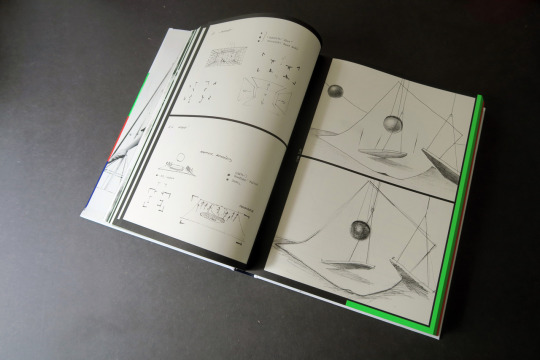

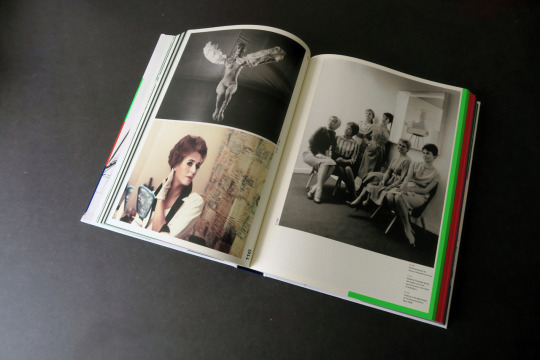
The Laterna Magika was first inaugurated in 1958 during the Expo in Brussels. (The year when Egon Eiermann and Sep Run delivered their masterpiece for the German pavilion.) It was a tool to display the technological revolutions of Czechoslovakia, but also the beauty of its citizens, landscapes, old towns and traditions. The audience was immersed in an experimental scenography, several screens floating in a space inhabited by kinetic sculptures, dancers, curtains, musicians. A multimedia show with a playful use of technology (synchronised film projectors) with a strong ideological background. (But do not all the world fairs and their national pavilions intensively deal with power, politics and propaganda?)
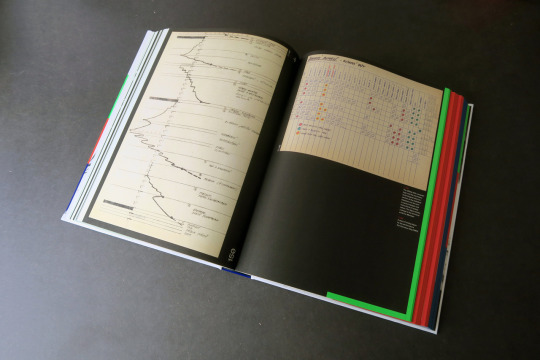
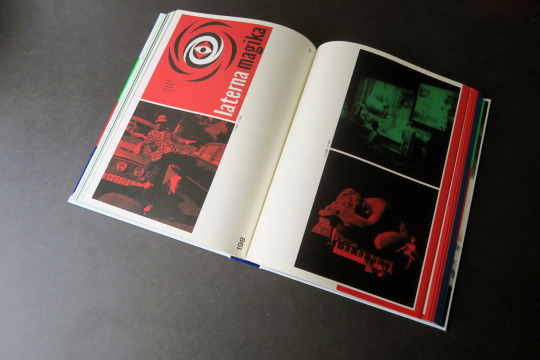

Obviously, what one finds in this book is the birth of stage design as we know it now for the Rolling Stones, Depeche Mode or Beyoncé – but also the invention of contemporary exhibition’s architecture. How many actual shows are relying on multimedia techniques to enhance the experience of the visitors when they face artworks or objects? How spectacular have become the scenes of concerts in front of 50,000 spectators in a stadium? And we tend to forget the power of those mise en scène, as they are often better than the music or art they display.
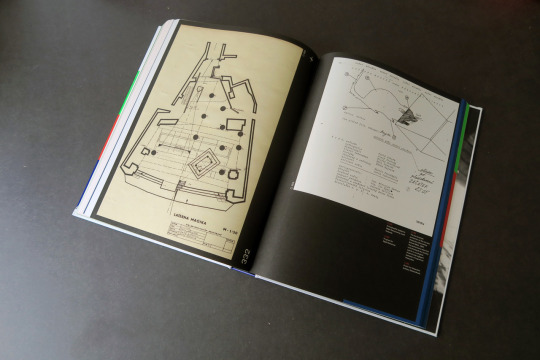
The Laterna Magika was ephemeral and temporary by nature. Even if it was showcased in Montréal, Bratislava, Leningrad, Mexico or Osaka (to name just a few), its message was transformed each time and its narration adapted with new technologies and its scenography got more complex and playful. It continued to produce performances until 2018, regularly in Prag, losing the ideological content requested by World Fairs to deal with the circus or classical dance. If one can still visit the reconstructed Barcelona Pavilion by Mies van der Rohe or see the Eiffel Tower and the Atomium from far away, there is nothing left from the different versions and presentations that took place in the different programs from the Laterna Magika…
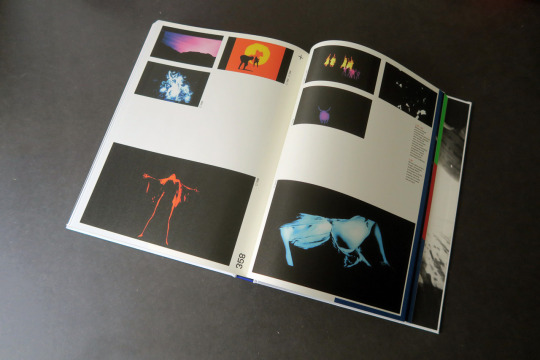
Or no, sorry, there is one thing that allows us to dive into that story: this amazing 400-page book that contains so many archives, drawings, photographs, essays and testimonies that it brings it back to life!
Thibaut de Ruyter
-----
www.thibautderuyter.com
4 notes
·
View notes
Text
yeeesss, YEEES
1 note
·
View note
Text
In 1986, Congress designated February National Black History Month, encouraging the American people to observe the history of Black Americans with activities and ceremonies. Now, cities around the country celebrate the month with a calendar full of events. If you’re looking for things to do in Atlanta to take part in Black history month, there’s no shortage of events and activities.
See the Alvin Ailey American Dance Theater
From Feb. 16-19, the Alvin Ailey American Dance Theater will perform at the Fox Theatre. The Alvin Ailey American Dance Theater was founded in 1958 by Alvin Ailey with the mission of showcasing African American dance. This month, dancers will put on five performances with critically acclaimed “Revelations” as the finale. Tickets for this event are available at alvinailey.org along with the Fox Theatre’s website or at the Fox Theatre box office.
Feb. 16-19. $29-$89. Fox Theatre, 1280 Peachtree St. NE, Atlanta. foxtheatre.org.
Visit the National Center For Civil And Human Rights
The National Center for Civil and Human Rights opened in June 2014. Throughout the year, the museum is dedicated to highlighting the accomplishments of the American civil rights movement and the worldwide human rights movement. Along with their exhibitions of artifacts from the Rev. Martin Luther King Jr., the center hosts various performances and lectures for the public. Tickets to visit can be purchased on the center’s website.
100 Ivan Allen Jr. Blvd., Atlanta. civilandhumanrights.org.
Visit the King Center
Like the National Center for Civil and Human Rights, the King Center provides opportunities for the public to learn about Black history and the civil rights movement. At the center, attendees can visit the crypt of the Rev. Martin Luther King, Jr. and Coretta Scott King and the Eternal Flame which symbolizes the ongoing movement to achieve King’s vision for equality. Admission to the King Center is free and a map of the campus can be found at thekingcenter.org..
449 Auburn Ave. NE, Atlanta. 404-526-8900, thekingcenter.org.
Attend Atlanta Black Expo
On Feb.11, Urban Atlanta & Taste Urban Atlanta will host a Black business expo. Urban Atlanta is dedicated to providing spaces for Black business owners to connect with each other and the community. Taste Urban Atlanta works to uplift Black food business owners. This event will feature music, food and drinks with plenty of opportunities for shopping, networking, family fun and more.
11 a.m.-7 p.m. Feb. 11. $15; VIP $45. Cobb Galleria Centre, 2 Galleria Parkway SE, Atlanta. atlblackexpo.com.
Jim Hill’s ‘Born to Be’
Jim Hill is a self-taught mosaic artist who will have his first big show at age 75 in February. Because his family couldn’t afford to buy paint, Hill chose torn paper as his medium. His work concerns the history of slavery and racism in the U.S. The show, titled “Born to Be,” will feature work that goes back to the early ‘60s but also includes Hill’s latest collection “A Piece of Life,” which offers large-scale mosaics of civil rights leaders. The show opens with a reception from 6-8 p.m. Feb. 9 at Mason Fine Art.
Through Feb. 28. Mason Fine Art, 764 Miami Circle NE, Suite 150, Atlanta. 404-879-1500, masonfineartandevents.com.
‘Remembrance as Resistance: Sweet Auburn Rise’
Atlanta artist and activist Charmaine Minniefield’s Praise House Project has placed place site-specific art installations in locations throughout the metro Atlanta area, including 2021′s “Remembrance as Resistance: Preserving Black Narratives” in Oakland Cemetery. In honor of Black History Month 2023, the project will mount a series of site-specific public art installations, exhibitions, and programs in downtown Atlanta, along Auburn Avenue in the King Historic District. The installations will explore the history of the 1906 Race Massacre and the legacy of Black resistance.
Feb. 3-5. Find a full schedule of planned activities online. Along Auburn Avenue, Atlanta. praisehouseproject.org.ExploreExplore Black History Month news from the AJC
Deana Lawson
Covering a period of 15 years, the first museum survey of the work of Brooklyn, New York-based photographer Deana Lawson is on its final tour stop at the High Museum through Feb. 19. The show blends her composed, staged domestic portraits with found photography, advertising imagery, holograms and crystals. “Her images of Black men, women and children become chronicles of the beauty of ordinary lives and its pleasures and pathos,” wrote AJC visual arts critic Felicia Feaster in her review. Join co-organizer Eva Respini of the Institute of Contemporary Art/Boston and director of New York University’s Center for Black Visual Culture Deborah Willis at 7 p.m. Feb. 10 ($20) for a discussion of Lawson’s work.
Through Feb. 19. $16.50, ages 6 and above; free for children 5 and younger and members. High Museum of Art, 1280 Peachtree St. NE, Atlanta. 404-733-4444, high.org.
Roswell Roots
The annual Roswell Roots festival offers a series of events honoring Black History Month and will get under way on Feb. 3 with the Black Opry Revue at the Roswell Cultural Arts Center. Music and storytelling will highlight the contributions of Black country artists, taking on perceptions of what it means to be a country musician in America. They’ll also stage the play “The Spirit of Harriet Tubman” as part of the Family Series on Feb. 3 and 4. The one-woman show will tell stories both familiar and rarely heard about the Underground Railroad conductor. Check the Roswell Roots website for a complete schedule of events.
Black Opry Revue: 7:30 p.m. Feb. 3. $27.50-$32.50. “The Spirit of Harriet Tubman”: 10 a.m. Feb. 3-4. $12. Roswell Cultural Arts Center, 950 Forrest St., Roswell. 770-594-6232, roswellroots.com.
#Atlanta#Things to do for Black History Month in ATL#ATL#Black History Month 2023#2023 Black History Month#Black History Matters
2 notes
·
View notes
Text
La #Schtroumpf Expérience à #Brussels #Expo
66 ans de Schtroumpfs : des héros de bande dessinée aux icônes mondiales. Le 23 octobre 1958, le monde découvre les Schtroumpfs, créations du dessinateur belge Peyo. Ce jour-là, ils apparaissent dans la série de bandes dessinées Johan et Pierewit, publiée en plusieurs épisodes dans l’hebdomadaire Robbedoes. Depuis, les Schtroumpfs sont devenus un phénomène mondial qui continue d��enchanter petits…
0 notes
Text


If you have ever driven on a motorway in Belgium you likely have encountered large abstract sculptures on the roadside. Unmistakable due to their sheer size their creator in Belgium and even more so outside the country is little known: it was architect/sculptor Jacques Moeschal (1913-2004) who by the early 1950s not only embraced sculpture as a means to break free from the limitations of architecture but also aimed at democratizing art. Although Moeschal initially worked in a figurative style he, through the rationality of modern architecture, quickly embraced abstraction as his language. In 2021 Bozar Brussels showed the first comprehensive retrospective of Moeschal’s work, accompanied by the present catalogue published by Verlag der Buchhandlung Walther und Franz König: it explores the artist’s work and for the first time also focuses on the few but equally fascinating buildings Moeschal realized. The latter include the spectacular pavilion of civil engineering at Expo 1958 in Brussels, his own modest home and the fortress-like House De Keignaert. But of course it is his monumental sculptures placed alongside Belgian (and Israeli) motorways since the early 1960s that have anchored Moeschal, often unbeknownst, in the memory of the people: the artist in his form-finding process was driven by the democratic nature of the motorway and the unique perception situation of driving by, seeing the sculpture through the narrow framing of a car window and at the same time moving at considerable speed. Accordingly the sculptures had be to be large and of simple shapes in order to be fully perceived and to distract from the monotony of the motorway. Through close cooperation with engineers and his architectural background Moeschal was able to have them cast on site in concrete, the material of the time perfect for monumental constructions like the „Signs“. Not many roadside artworks are of great quality but Jacques Moeschal‘s works are a wonderful exception that finally receives its due appreciation in the present catalogue that I warmly recommend!
57 notes
·
View notes
Text


Princess Grace and Prince Rainier at Expo Brussels' 58. The former Hollywood star is wearing the Morabito needlepoint bag that she carried to the Oscars in 1955 and at a reception before her wedding at the palace in April 1956.
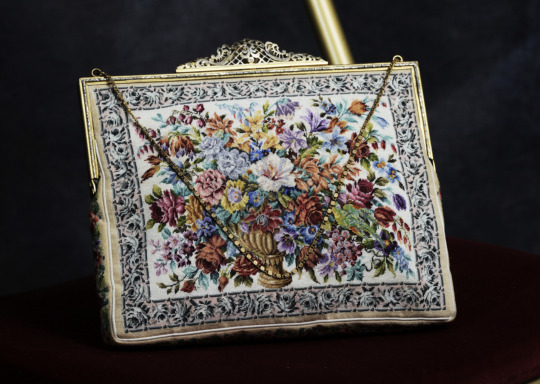



#grace kelly#bag#princess grace#brussels#tapestry#expo#belgium#1958#inside grace's wardrobe#morabito#morabito bag#needlepoint
2 notes
·
View notes
Text
Events 10.1 (after 1950)
1953 – Andhra State is formed, consisting of a Telugu-speaking area carved out of India's Madras State. 1953 – A United States-South Korea mutual defense treaty is concluded in Washington, D.C. 1955 – The Xinjiang Uyghur Autonomous Region is established. 1957 – The motto In God We Trust first appears on U.S. paper currency. 1958 – The National Advisory Committee for Aeronautics is replaced by NASA. 1960 – Nigeria gains independence from the United Kingdom. 1961 – The United States Defense Intelligence Agency is formed, becoming the country's first centralized military intelligence organization. 1961 – East and West Cameroon merge to form the Federal Republic of Cameroon. 1962 – James Meredith enters the University of Mississippi, defying racial segregation rules. 1963 – On its third anniversary as an independent nation, Nigeria became a republic. 1964 – The Free Speech Movement is launched on the campus of the University of California, Berkeley. 1964 – Japanese Shinkansen ("bullet trains") begin high-speed rail service from Tokyo to Osaka. 1966 – West Coast Airlines Flight 956 crashes with no survivors in Oregon. This accident marks the first loss of a DC-9. 1969 – Concorde breaks the sound barrier for the first time. 1971 – Walt Disney World opens near Orlando, Florida. 1971 – The first practical CT scanner is used to diagnose a patient. 1975 – Muhammad Ali defeats Joe Frazier in a boxing match in Manila, Philippines. 1978 – Tuvalu gains independence from the United Kingdom. 1979 – The MTR, Hong Kong's rapid transit railway system, opens. 1982 – Helmut Kohl replaces Helmut Schmidt as Chancellor of Germany through a constructive vote of no confidence. 1982 – EPCOT (Experimental Prototype Community of Tomorrow) opens at Walt Disney World in Florida. 1982 – Sony and Phillips launch the compact disc in Japan; on the same day, Sony releases the model CDP-101 compact disc player, the first player of its kind. 1985 – Israel-Palestinian conflict: Israel attacks the Palestine Liberation Organization's Tunisia headquarters during Operation Wooden Leg. 1987 – The 5.9 Mw Whittier Narrows earthquake shakes the San Gabriel Valley with a Mercalli intensity of VIII (Severe), killing eight and injuring 200. 1989 – Denmark introduces the world's first legal same-sex registered partnerships. 1991 – Croatian War of Independence: The Siege of Dubrovnik begins. 2000 – Israel-Palestinian conflict: Palestinians protest the murder of 12-year-old Muhammad al-Durrah by Israeli police in northern Israel, beginning the "October 2000 events". 2001 – Militants attack the state legislature building in Kashmir, killing 38. 2003 – The popular and controversial English-language imageboard 4chan is launched. 2009 – The Supreme Court of the United Kingdom takes over the judicial functions of the House of Lords. 2012 – A ferry collision off the coast of Hong Kong kills 38 people and injures 102 others. 2014 – A series of explosions at a gunpowder plant in Bulgaria completely destroys the factory, killing 15 people. 2014 – A double bombing of an elementary school in Homs, Syria kills over 50 people. 2015 – A gunman kills nine people at a community college in Oregon. 2015 – The American cargo vessel SS El Faro sinks with all of its 33 crew after steaming into the eyewall of Hurricane Joaquin. 2016 – The leader of the Spanish Socialist Workers' Party, Pedro Sánchez, resigns. He would return to the position a year later. 2017 – Fifty-eight people are killed and 869 others injured in a mass shooting at a country music festival at the Las Vegas Strip in the United States; the gunman, Stephen Paddock, later commits suicide. 2018 – The International Court of Justice rules that Chile is not obliged to negotiate access to the Pacific Ocean with Bolivia. 2019 – Kuopio school stabbing: one dies and ten are injured when Joel Marin, armed with a sabre, attacks a school class at Savo Vocational College in Kuopio, Finland. 2021 – The 2020 World Expo in Dubai begins. Its opening was originally scheduled for 20 October 2020 but was delayed due to the COVID-19 pandemic.
0 notes
Text

Princess Grace and Prince Rainier at the Expo 1958 in Bruxelles, Belgium.
10 notes
·
View notes
Text


that said, I did visit Prague earlier this month and want to go back. This is the cafe at the Expo 1958 pavillion, by Letná park
0 notes